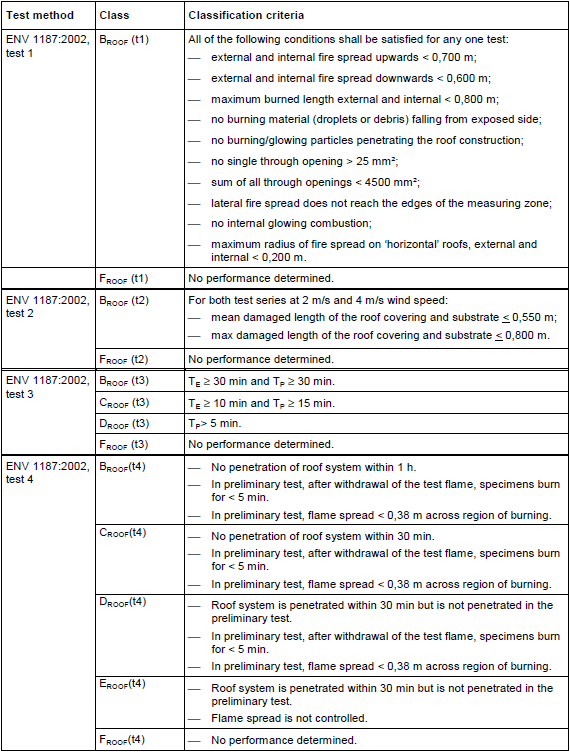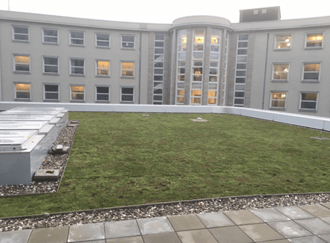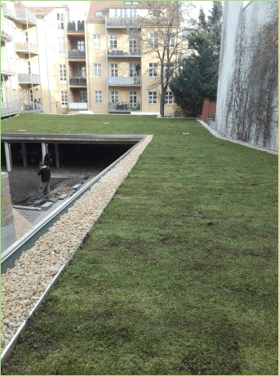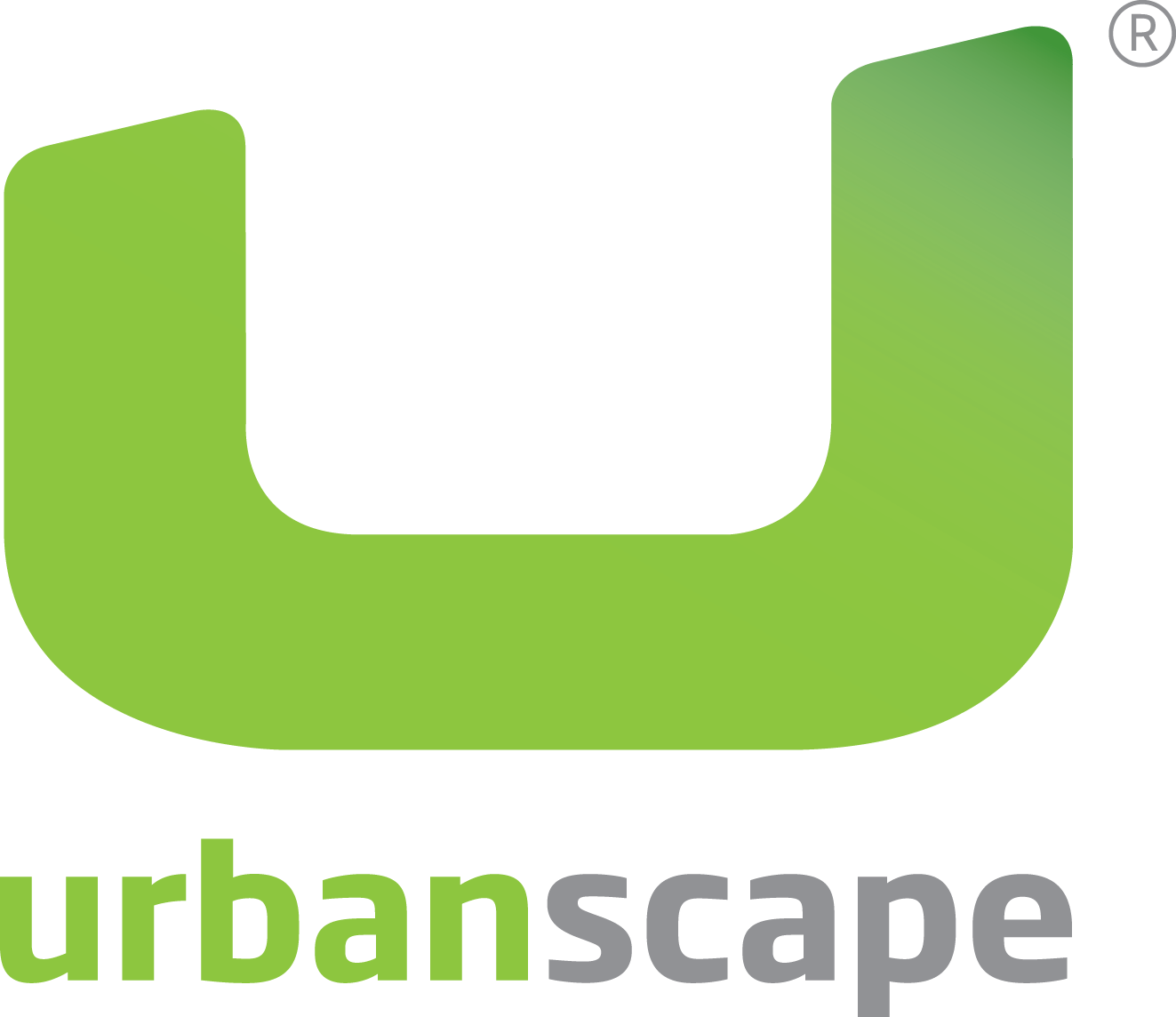Some 40 years ago the first truly extensive green roofs were built in Germany. Since then, green roofs have become a common addition to buildings. At the same time, this development has led to a more critical approach to fire safety. Related requirements are becoming increasingly strict, and will continue to evolve as green roof designs develop.
Green roofs should be designed to provide the necessary fire resistance
The first green roof performance tests, including fire tests, were performed and analysed in the 1990s. It’s pretty safe to say that fire safety regulations differ, sometimes significantly, from country to country. So in order to gain a larger global perspective we need to review the way fire safety is treated and talked about on major green roof markets.
After reviewing many cases over the past few years, we can say that generally green roofs should be designed to provide the necessary resistance to the spread of fire by considering 4 primary measures:
(1) The most cited measure is to increase the content of non-combustibles in the growing medium;
(2) Lower the organic content of the growing medium;
(3) Prevent the system from drying out; extensive roofs are not generally irrigated, therefore the risk of fire is mitigated by creating effective fire breaks and by reducing the organic content of the medium;
(4) Last but not the least, fire safety can also be significantly improved by not employing highly combustible drainage elements (especially at the time of installation).
A number of guidance documents also refer to fire-resistant vegetative systems as “succulent-based” and “grass-based” systems – in both cases the growing media must contain at least 80% inorganic matter.
Fire Testing of Green Roof Systems
Classifications are set for testing methods for external exposure of fire to roofs.
The standard is based on the test methods contained in ENV 1187:2002. The test methods (t1, t2, t3 and t4) evaluate the fire performance of roofs/roof coverings under the following conditions:
(1) test 1 (t1) assesses the performance of a roof exposed to burning branches
(2) test 2 (t2) assesses the performance of a roof covering exposed to burning branches and wind
(3) test 3 (t3) assesses the performance of a roof exposed to burning branches, wind and supplementary radiant heat
(4) test 4 (t4) assesses the performance of a roof using a two-stage test method involving burning branches, wind and supplementary radiant heat
Classes of external fire performance for roofs / roof coverings:

Source: European Committee For Standardization, Fire classification of construction products and building elements
What about in Germany?
As the Germans were the first to implement modern green roof designs we had a special look at Germany. The requirements of the German market were defined particularly strictly by federal state building ordinances, which require that building products meet a fire class rating of at least E (normal entflammbar), except in cases where the application itself contributes to reducing the spread of fire of non-classified, “easily combustible” (leichtentflammbar) products such that it performs like an E class-rated product according to EN 13501-1. All unrated products must be treated as “easily combustible”.
Generally speaking, this means that Green Roof Systems for Germany need to be designed with all of the elements having an E fire class rating, regardless of the fire performance tested for the full Green Roof System. In practical applications this means that every single Green Roof layer delivered separately to the roof needs to have E-Class certification according to the European Fire Class norm.
Most people from the green roofing industry don’t take this as a risk, question this kind of approach, and don’t even respect it. However, coming from the building industry and as a member of the Fire Safe Europe alliance, we can point to but a single, simple reason that respecting fire safety guidelines is important (fire resistance of green roof should be ensured).
When the layer that is easily combustible is delivered to the roof during construction, it represents a huge risk of eventual fire and the spread of such. It poses a risk for the newly-built building itself, but even more of a risk if the green roof is being erected on an existing building where residents are already present. Many lives could be at stake, so we from the Green Roof Industry must take such regulations seriously and not try to avoid them.


Photo 1: Deutsche Rentenrversicherung Bund, Berlin, Germany | Photo 2: Lightweight car park, Halle / Salle, Germany
In Europe, Fire Safe Europe and its partners from the building industry are calling for a holistic, coordinated approach to these issues through the implementation of a European Union Fire Safety Strategy. We strongly believe that harmonised fire tests and classification schemes for Green Roof Systems across all EU countries and beyond, based on the same testing methods at appropriate scales and representing all possible risk scenarios is something toward which we should we should all be aiming.
Presently, we are all working amidst a patchwork of different fire testing requirements – and this is bad news for fire safety.
Interested in Green Roof Systems we can offer?
Download our Urbanscape Green Roof System brochure or BIM designs for Urbanscape Green Roof below.
Source:
- Jörg Breuning, Green Roof Service LLC - Green Roof Technology
- UK Government, DCLG, Fire Performance of Green Roofs and Walls
- Research Society for Landscape Development and Landscape Construction, FLL-"Guidelines for the Planning, Construction and Maintenance of Green Roofing – Green Roofing Guideline"
- European Committee For Standardization, Fire classification of construction products and building elements



